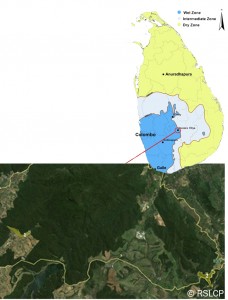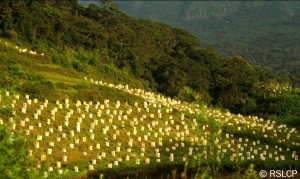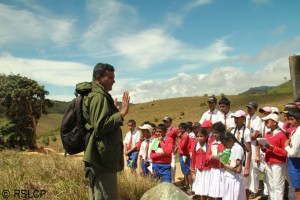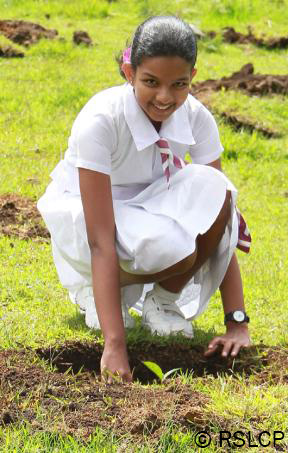The Montane Evergreen Forests (MEF) of Sri Lanka is beginning to expand. This is great news for the Horton Plains slender loris (HPSL), a subspecies which is endemic to Sri Lanka and restricted to the MEF in the central highland. Furthermore the MEF in Sri Lanka is considered a super-hotspot within the globally important Sri Lanka/Western Ghats Biodiversity Hotspot. Unfortunately the MEF (1,600 m above sea level) is one of the critical ecosystems in Sri Lanka and these forests suffer high deforestation rates, and with over 80% of the MEF lost, this vital ecosystem now accounts for only >0.1% of the country’s total land area.
The Red Slender Loris Conservation Project (RSLCP) identified that deforestation and forest isolation is also high in this region and four out of six HPSL occupied forests were isolated – Horton Plains NP, Conical Hill FR, Single Tree FR, and Haggala SNR. As part of the ongoing RSLCP, a Species Conservation Strategy has been drafted, which has identified the restoration of the MEF and raising awareness among local stakeholders as priority activities for conservation of the HPSL.
We are pleased to announce that the recently completed project “Re-establishing Ecological Corridors for the Horton Plains Slender Loris” is able to achieve the goals set out in the Species Conservation Strategy through tree planting that will reconnect existing areas of MEF. This is a collaborative initiative, with Sri Lankan and international partners, including: the Open University of Sri Lanka, University of Colombo, and Land Owners Restore Rainforests in Sri Lanka and the Zoological Society of London (EDGE of Existence programme) with financial support provided by BBC Wildlife Fund.
Achievements
The project was able to establish three plant nurseries with native montane plants in Nuwra Eliya with a capacity of 4,550 potted plants at a time. This will be a huge benefit for future restoration activities in this region. The project also wants to thank Dr R. Rudran for providing financial support to maintain these plant nurseries via Margot Marsh Biodiversity Foundation during the last couple of months.
Replanting was ceremonially started in 21st May 2013 with participation of the Mayor of Nuwara Eliya, the DWC staff members, the Forest Department staff members, Participants from District Secretariat Nuwara Eliya, Local community groups, teachers and students from six schools in Nuwara Eliya. The event was jointly organized by the Open University of Sri Lanka, Field Ornithology Group of Sri Lanka and LORRIS. We were able to plant 5,245 native tree saplings at the two sites (Meepilimana and Ambewela) in Nuwara Eliya with total area of 4.2 ha.
Furthermore the project was able to conduct several community awareness programmes, school awareness programmes and field trips in Nuwara Eliya. Part of these awareness activities were funded by Lanka Challenge 2012 and 2013 as part of the “LARGE minority travel”.
This success encouraged us to expand these efforts to other sites already identified (we identified nearly 100 ha of lands need to be restored to connect these forest islands) and maintain the effort for at least the next five years. Hopefully longer!



